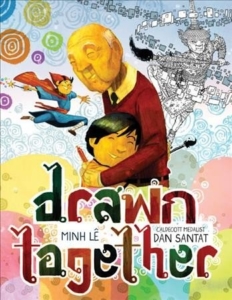
The holiday season is the perfect time to purchase, peruse and learn from illustrated children’s books, which take storytelling to magical heights with imagery, imagination and simplicity. It’s a gift that can keep on giving all year.
Parents who have read children’s books at bedtime for their sons and daughters know how enchanting and engaging they can be, even for adults. It turns out children’s book are an illustrative guide to effective communication through storytelling.

Most children’s books follow a basic outline. They start quickly, introduce the central character, reveal the main problem, use repetition, reinforce the storyline with illustrations and conclude with an upbeat ending. Most children’s books have a catchy title and aren’t overly long. It is an outline that can work for virtually any kind of communicator, regardless of the age group of his or her audience.
As a parent who read beautiful children’s books at night to my son and daughter, I formed opinions about what made them so grand and captivating as I nodded off alongside my kids. I came to believe illustrated children’s books fuel curiosity, entertain imagination, delight the eye and turn everyday events into something special. Children’s books do what great storytellers do – they arouse interest, transport us to new places, generate smiles and sometimes tears and teach us lessons.
In service of sharing big ideas that matter, TED Talks have many of the same characteristics as children’s books. However, most speakers and presenters have more commonplace assignments and venues. Their jobs may be to unveil a business plan to employees, explain a public policy to constituents or discuss a community problem at a neighborhood forum. Their audiences may range in temperament from skeptical to outraged to bored stiff. These speakers could use some story-time magic.
Authors of children’s books don’t pull their stories out of thin air. They observe, inquire and experiment until they arrive at their best idea for a story. For the average speaker, that translates into giving careful thought to what will instantly capture the attention of an audience. For the business plan, it might be to bill it as the way to double sales. For the public policy, it might be to paint the picture of success. For the community problem, it might be to offer a solution.
Too many speakers back into their subject or fumble with an awkward beginning. Storytellers start quickly, make a strong first impression and pique interest. Feed your audience‘s curiosity and imagination by letting them know right away what you are proposing, how it will work and why it matters.
Storytellers keep their narratives simple. They don’t boggle the minds of their audience with lengthy process, extraneous detail and excessive statistics. There is a time and place for process, details and numbers; it just isn’t part of the anatomy of a good story.
Serious subjects can coexist with some lightheartedness, whether in the form of a relevant story or meaningful anecdote. Putting a personal touch on topics tends to shrink problems to a human scale. It can make difficulty and conflict seem less intractable and a solution more achievable.
Storytellers keep their narratives simple. They don’t boggle the minds of their audience with lengthy process, extraneous detail and excessive statistics. There is a time and place for process, details and numbers; it just isn’t part of the anatomy of a good story.
During my childhood, children’s books were filled with words and few pictures. Now, children’s books have two authors – the writer and the illustrator, even if it sometimes is the same person. Contemporary children’s books reinforce words with pictures. At their best, the pictures reinforce the words and expand their meaning. Speakers are wise to follow the same pattern.
The right story, when told right with fetching verbal illustrations and ended before an audience loses interest, is a fool-proof formula for speaker delight any time of year.
Merry Christmas.




